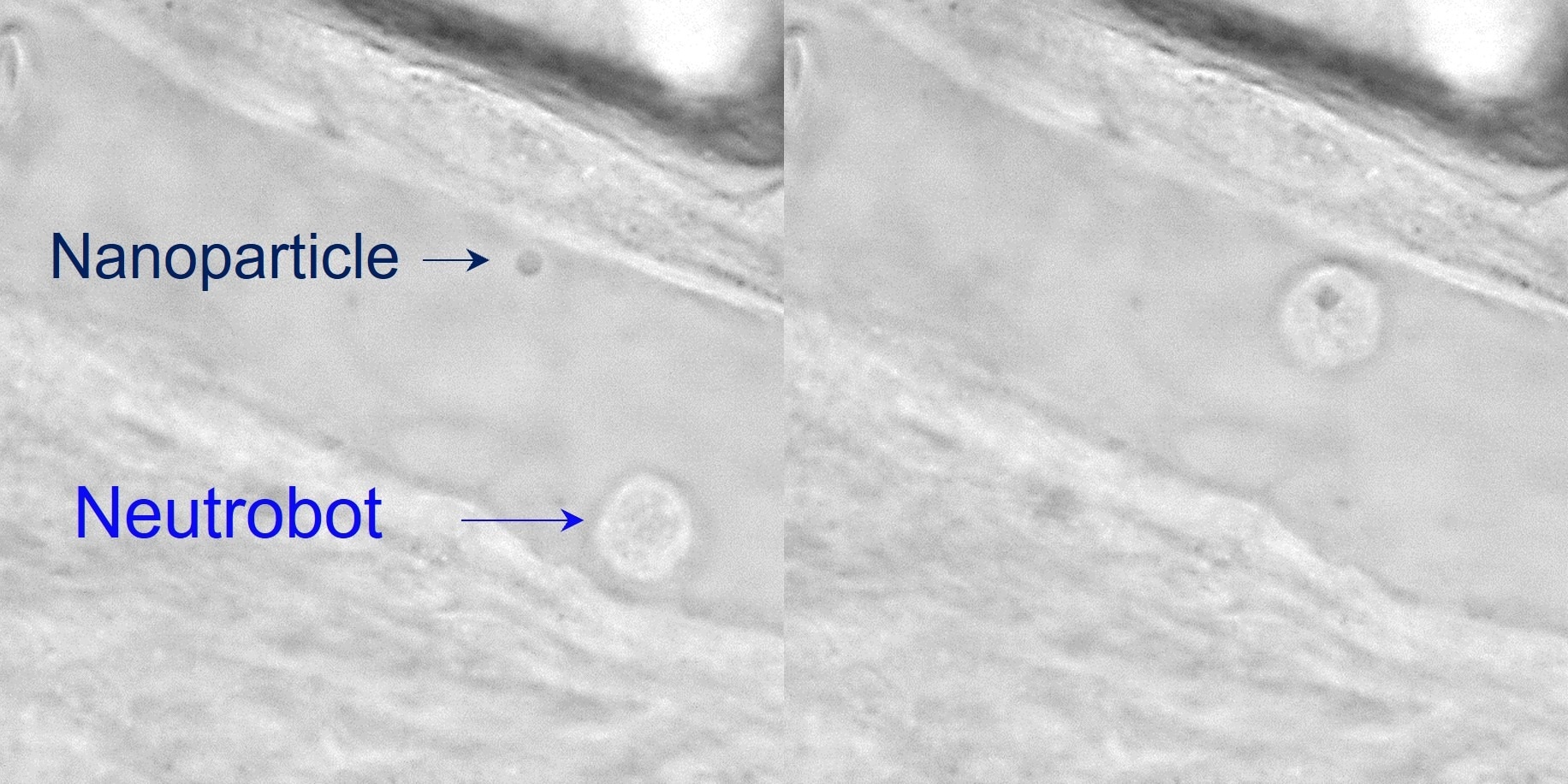Medical microrobots could aid doctors in providing better illness prevention and treatment. However, the majority of these gadgets are created from synthetic materials that incite in vivo immunological reactions.
 A laser precisely guided a “neutrobot” toward a nanoparticle (left image), which was picked up and transported away (right image). Image Credit: Adapted from ACS Central Science 2022
A laser precisely guided a “neutrobot” toward a nanoparticle (left image), which was picked up and transported away (right image). Image Credit: Adapted from ACS Central Science 2022
Scientists have now successfully utilized lasers to precisely manipulate neutrophils, a type of white blood cell, in living fish as a natural, biocompatible microrobot for the first time, as reported in ACS Central Science.
The “neutrobots” demonstrated how they could someday administer medications to specific areas of the body by performing various functions.
Microrobots that are now being developed for medical use need to be injected into an animal or ingested as capsules. However, scientists have discovered that these tiny items frequently cause immunological reactions in small animals, which prevents the elimination of microrobots from the body before they can carry out their functions.
A less invasive method for medication administration that would not activate the immune system would be to use cells already found in the body, such as neutrophils. These white blood cells are suitable candidates for microrobots because they can naturally take up nanoparticles and deceased red blood cells and move through blood arteries into surrounding tissues.
Earlier, scientists have directed neutrophils with lasers in lab dishes, stirring them around as “neutrobots.”
However, this strategy's effectiveness in living animals was not known. Therefore, Xianchuang Zheng, Baojun Li, and coworkers intended to use live zebrafish to prove the viability of light-driven neutrobots in animals.
Using focused laser beams as remote optical tweezers, the scientists moved and controlled neutrophils in zebrafish tails. It was possible to move the light-driven microrobot up to 1.3 µm/s, which is three times quicker than a neutrophil would move normally.
The researchers in their tests to precisely and actively manipulate the immune system functions carried out by neutrophils utilized optical tweezers.
For example, a neutrobot was inserted into the surrounding tissue through the wall of a blood vessel. Another one demonstrated its ability for transporting drugs by picking up and moving a plastic nanoparticle. A neutrobot also absorbed the red blood cell fragments when it was pushed in their direction.
Interestingly, a separate neutrophil not guided by a laser attempted to naturally remove the cellular debris simultaneously. The scientists noted that this work expands the potential for precision illness therapy and focused drug administration because they could manage neutrobots in vivo.
The National Natural Science Foundation of China, the Basic and Applied Basic Research Foundation of Guangdong Province, and the Science and Technology Program of Guangzhou have all provided funding to the writers.
Journal Reference:
Liu, X., et al. (2022) Optically Manipulated Neutrophils as Native Microcrafts In Vivo. ACS Central Science. doi.org/10.1021/acscentsci.2c00468.